Tags
Nah, it’s just a hti.
Looking skyward when visiting a wat in Thailand, you may see many strange creatures and details used as architectural elements. Many are finials on the wat’s roof, some are free standing. Some are typically found at all wats, others only in the North where the architecture takes on influences from Burma and Laos. You can enjoy them without knowing what they are or what they represent, but having that knowledge may make your visit a bit more rewarding. If nothing else you can impress, or bore, your travelling companions with your superior wisdom and insight.
Dok So Fa:
I was recently sorting through the photos I took at Wat Sri Suphan in Chiang Mai and noticed the ubosot under construction has a dok so fa. Maybe I’m easily entertained, but that architectural detail grabbed my attention. You don’t see them much in Thailand, they are a temple element used in Laos. A few Northern Thailand wats include a dok so fa, but they are a rare sight.

Chiang Mai’s Silver Wat features a dok so fa. Notice the unusal trio of hang hong in the image of Ganesha, Guarda, and a Naga.
This metallic detail sitting mid-center on the temple’s roof line looks like a crown. It is usually made up of a number of small gilded parasols, though occasionally other elements are used. The more elements this decoration on top of the roof has, the more important is the monastery. In Laos, if more than ten are used in the dok so fa’s design it signifies that the wat was built by a king. Dok so fa are said to symbolize the universe.
Cho Fa:
Often in the form of a stylized garuda, the mythical bird-like creature of Buddhist legend, these graceful decorations sweeping skyward rise from either end of the temple’s roof peaks. Cho fas are often referred to as sky tassels and are the most distinctive detail on wat roof lines. Cho fa, and to a lesser extent hang hong, are often decorated with little bells that tinkle in the wind.
The belief is that the cho fa protect the temple from flying demons; should an evil spirit fall from the sky it will be impaled on the point of the cho fa and be unable to cause harm to the religious community.
Hang Hong:
Joining the cho fa as decoration on a wat’s roof are hang hong, most often seen in the form of naga heads. Hang hong are often an integral part of the roof’s bargeboard, called pan lom, that cover the ends of the gables to prevent roof tiles from falling off. The bargeboards are often decorated like a downward, undulating body of the naga. Blade-like projections along the spine of the pan lom are usually stylized naga scales or feathers of the garuda and are called bai raka. Hang hong usually face away from the roof.
Chad:
Chads are the humongous, usually gold, umbrellas you see in the courtyards of wats in Northern Thailand, Not to be confused with the tiered umbrellas used over statues of the Buddha, Chad are filigreed parasols of Burmese origin that are often affixed to the corners of the railings enclosing the wat’s chedi.
Hti:
Think of a hti (pronounced ‘tea’) as an underachieving chad. Also from Burma and seen most frequently in northern Thailand temple architecture, hti are often bejeweled, sometimes gold, and sometimes silver. They adorn the topmost part of a wat’s chedi and appear on temple spires throughout the Kingdom.

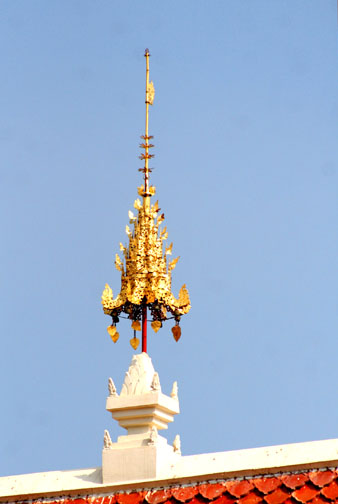


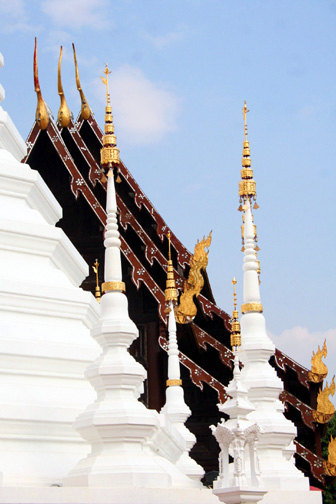
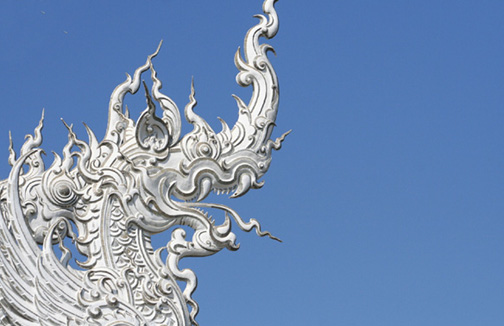
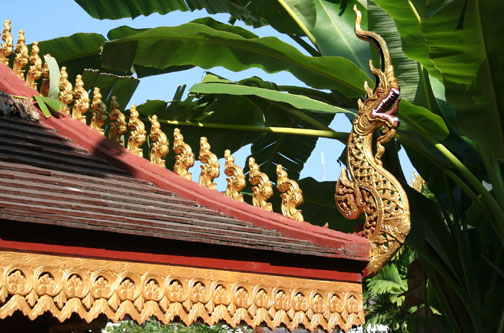
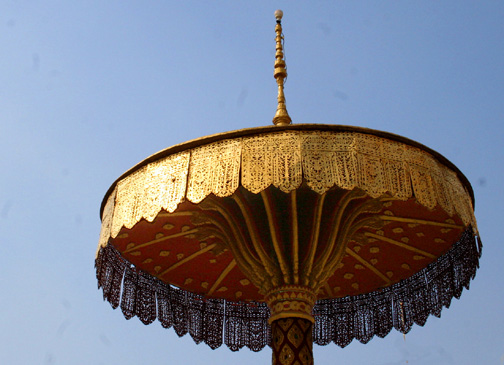
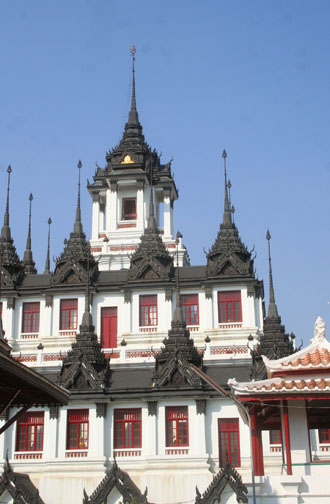
A welcome change from counting ‘Dik So Fa” I’m always impressed by the cultural knowledge imparted on this site.
Kop khun krap Acharn .
Dik so fa – classic. I should let you guys write this stuff!